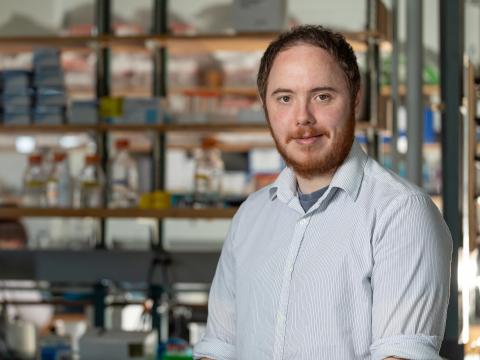
Daniel Grimes
MBiochem., Oxford University
DPhil., Oxford University
Contact
Research Interests
We study how symmetries are broken and maintained during embryonic development and growth. Why are our hearts on the left and how do they come to be there? How do our two arms develop to be the same size? How does our spine stay straight during growth?These interests have led us into all kinds of fascinating areas of biology including cilia and fluid flow in the embryo and brain, the transduction of mechanical signals, the enigmatic Polycystin proteins, ciliated neurons, cell polarity, and more.We use a variety of procedures to address these questions including genetics, single cell sequencing, confocal imaging and micro-computed tomography. We primarily use the zebrafish model organism.
Our recent work addresses the following questions:
How is embryonic symmetry broken?
In many vertebrates, early embryonic left-right symmetry is broken by an asymmetrical fluid flow generated by beating cilia (reviewed in Grimes and Burdine, Trends in Genetics, 2017). Sensation of that flow - which also depends on cilia - requires Polycystin family transmembrane proteins ( Grimes et al., Plos Genetics, 2016). We study the pathways by which flow signals are transduced and ask how these pathways control the emergence of left-right asymmetries in the embryo.
How does the spine retain symmetry?
The spine is the defining feature of vertebrate life, but how it remains straight during growth is a mystery. In zebrafish mutants that lack cilia motility, cerebrospinal fluid flow is compromised. This results in late-onset spinal curves that appear during a growth spurt (Grimes et al., Science, 2016). These mutants closely model the human disease idiopathic scoliosis, the presence of abnormal 3D spinal curves that often occurs in adolescence. We apply micro-computed tomography, CRISPR mutagenesis, and single cell techniques to understand the roles of cilia and flows in maintaining spinal symmetry and to model idiopathic scoliosis.
